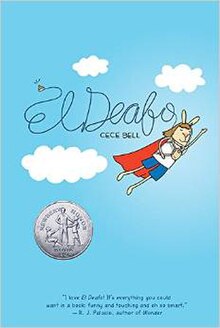
1. BIBLIOGRAPHY
Zusak, Markus. The Book Thief. New York: Random House Children's Book, 2005. ISBN 978-0-375-83100-3
2. PLOT SUMMARY
After witnessing her younger brother's death, Liesel is taken to a new home in Germany where she meets and grows to love her new foster parents. Young Liesel makes friends, attends school and spends time learning to read with her Papa, as the story of happy and devastating times unveil.
3. CRITICAL ANALYSIS
Liesel is a strong, likeable protagonist who, despite being haunted by her brother's death, is able to make friends and enjoy the little things in life once again. Teenagers and adults alike will be able to connect to and respect Liesel's willpower and strength to move on, though trouble always seemed to be lurking around the corner. Through everything that is happening during Hitler's reign, the young girl still finds things to believe in - words. Liesel discovers the power of words, and no matter how difficult it may seem, she strives to learn to read and write with her Papa's help. She successfully accomplished something she has set her mind to, and books became her obsession, playing a big part in the story.
The setting, Germany. Hitler reigns, the war is underway. Jews are being sent to camp and killed, as are German supporters. Himmel Street is home to family, friends, soccer games, races, bike rides, late nights reading and writing. That is where Liesel's life happens, until it is completely gone. The weather plays a huge role in the setting because sunny or rainy days, once appreciated by Max, who lived in a basement, turn into red, orange, and gray skies through the bombings. Zusak's descriptive words of the skies lay the groundwork for the happy days and the tragedies to come.
The question "will good or evil prevail?" is presented through the many circumstances in Liesel's life, but especially through the main plot of the storyline of her stealing books. Readers will agree that it is wrong to steal, but is stealing a book from a bonfire really stealing, if no one really wants it? Or if the mayor's wife knows books are being taken, is it still considered stealing? And though this protagonist's passion was books, how bad was it to steal food when they were truly hungry? or to hide a Jew in their basement because he was a person, too? So many opportunities for discussion are available in this book.
Most prominent, the narrator. Though the book reads as an regular novel, the narrator in this case is death, himself. His voice, as he describes the job of taking souls in a few sections of the book, are nothing short of terrifying. Though he tells the orphan's story, through her written words in the book he had found and carried with him throughout the years, he some times chimes in on his role in the horrible era of Hitler and what he has seen. If nothing else, the way the book ends says something about the affect this significant historical tragedy had on the world: "A last note from your narrator - I am haunted by humans."
On a personal note, I did something through the last 15 or so pages that I had not done in quite some time - I cried as I turned the las few pages, and read the story of this poor child who lived through it all. What does that say about what humans are capable of, when from one point of view, Zusak presents death as someone who is not doing the haunting, but the one who is haunted?
4. REVIEW EXCERPT(S)
New York Times Bestseller
Michael L. Printz Honor Book Award
Best Book of the Year by Publishers Weekly, Kirkus Reviews, The Horn Book Magazine, School Library Journal, Booklist and The Bulletin
From School Library Journal: “Death is not a sentimental storyteller, but he does attend to an array of satisfying details, giving Liesels story all the nuances of chance, folly, and fulfilled expectation that it deserves. An extraordinary narrative.”
From Horn Book Magazine: “Exquisitely written and memorably populated, Zusak's poignant tribute to words, survival, and their curiously inevitable entwinement is a tour de force to be not just read but inhabited."
From Booklist: "More than the overt message about the power of words, it's Liesl's confrontation with horrifying cruelty and her discovery of kindness in unexpected places that tell the heartbreaking truth."
5. CONNECTIONS
Gather other Children's Holocaust Fiction books to read such as:
• Number the Stars. ISBN-10 0547577095
• The Boy in the Striped Pajamas. ISBN-10 0385751532
Gather other Markus zusak books to read such as:
• Azarao. ISBN-10 8528616436
• Bom de Briga. ISBN-10 8528616533
Use in conjunction with an in depth study on the Hitler's reign and the war







